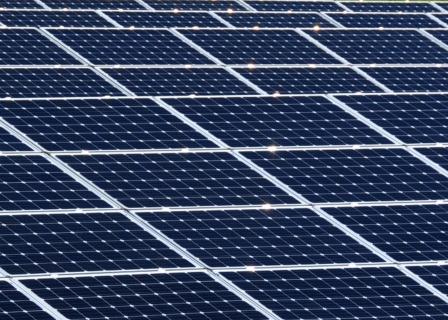Mercom Capital Group, a global clean energy communications and research firm is forecasting solar installations in India to total approximately 5 GW for calendar year 2016. Cumulative solar installations in India crossed the 7.5 GW mark as of May 2016 with about 2.2 GW installed so far this year, more than all of the solar installations in 2015. India’s solar project pipeline has now surpassed 22 GW with ~13 GW under construction and ~9 GW in the Request for Proposal (RfP) process.
“The Indian solar market is growing in size but the question is: is it too much too fast, as infrastructure and systems have not kept pace with auction announcements. For the sector to move from 2 GW to a 10 GW a year market, work still needs to be done,” commented Raj Prabhu, CEO and Co-Founder of Mercom Capital Group.

The government has shown a strong commitment to renewables and it’s push towards solar is beginning to show results, at the end of FY2015-16, solar represented 2.5 percent of the net installed capacity in India, up from 1.4 percent a year ago, and was the fastest growing new energy source in the country. Solar accounted for 17.4 percent of all renewable energy generation in FY2015-16 compared to 10.5 percent in FY2014-15.

Low bidding levels through reverse auctions have been a major concern at a time when the Indian banking sector is going through its own challenges, which could make borrowing much more difficult in the short-term. According to Reserve Bank of India (RBI) data, bank loans worth Rs.7 lakh crore (~$103 billion) were under stress as of the end of 2015. Currently, 19 developers have bid for 2.9 GW of solar projects below Rs.5 (~$0.0735). About 1.2 GW of these projects have signed power purchase agreements (PPAs). On a slightly positive note, the lowest tariff of Rs.4.34 (~$0.0638) seems to have been a outlier with all subsequent auctions coming in at Rs.4.66 (~$0.0685) or more.
“There is no set rule which says tariffs below Rs.5 (~$0.0735) cannot be financed. Some banks are seriously looking at projects in the Rs.4.5-5 (~$0.0662-0.0735) tariff range, but financing depends on sound project economics, borrower credibility, a strong balance sheet and the developer's ability to service debt,” further commented Prabhu.
Of the estimated $8 billion (~Rs.54,400 crore) collected under the Clean Environment Cess to date, only about $3 billion (~Rs.20,400 crore) is expected to be transferred to the National Clean Energy Fund (NCEF). The Ministry of New and Renewable Energy (MNRE) is likely to be allocated only 23 percent of the total amount collected so far under the Clean Environment Cess. With late tariff payment problems and rooftop subsidy delays, creation of a ‘reserve backstop fund’ against non-payments or delayed payments by DISCOMs using NCEF funds could have an immediate positive impact, eliminating offtaker risk, reducing interest rates and increasing lending.






